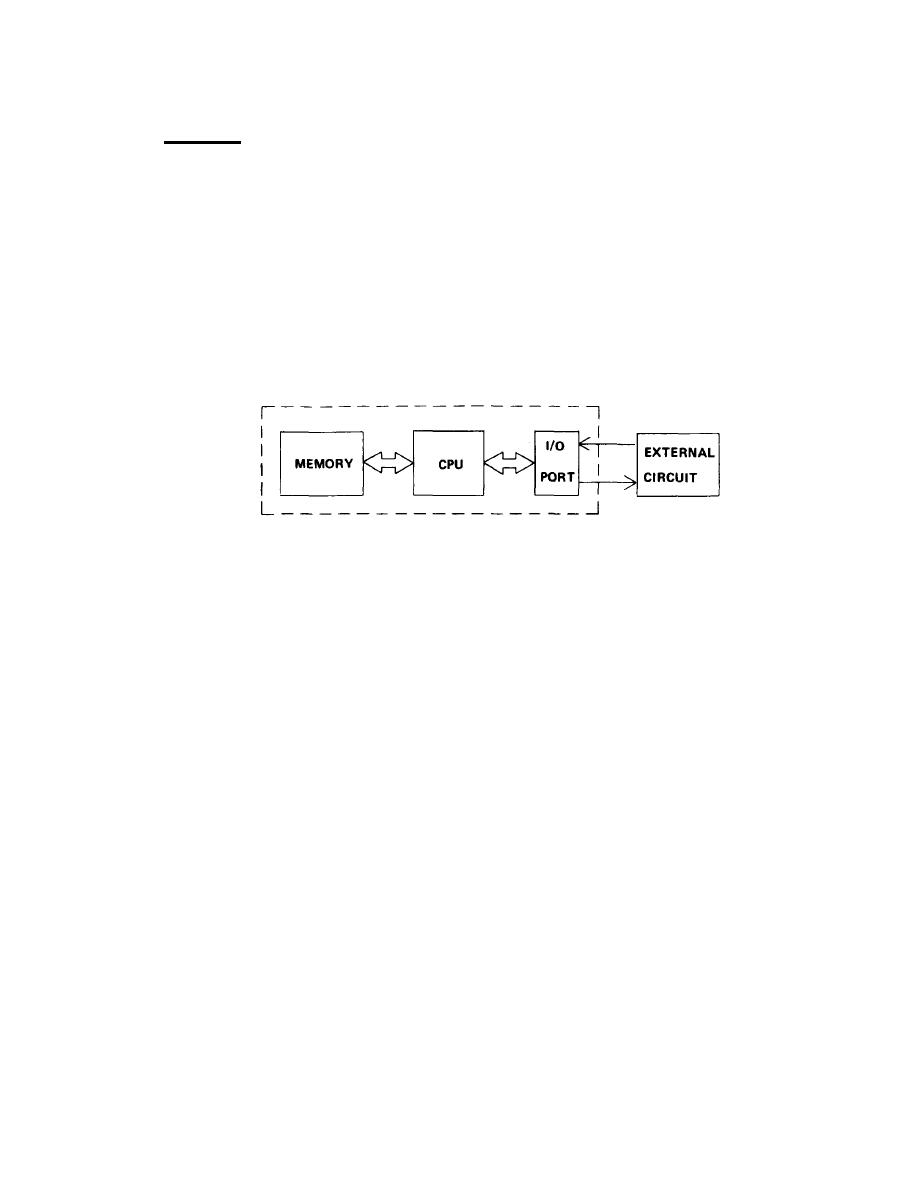
TM 6-6675-324-14
3-3.
TECHNICAL PRINCIPLES OF OPERATION.
3-3.1 General. All electrical control functions of the copier are performed
by a microcomputer. The microcomputer controls copying operations by reading input
sensor signals and outputting commands according to a built-in program. These
commands cause the motor and solenoids to operate and amplify low level microcompu-
ter outputs to control the high power loads of the motor. The control system
consists of:
Microcomputer (a)
Drivers (b)
Operating Loads (c)
Reading of Input Sensors/Commands (d)
a.
Microcomputer.
The microcomputer consists of a ROM, a CPU, and an I/0 port. These are incorporated
into a single chip of silicon which is called a single chip microcomputer. It is a
four-bit type. Four-bit refers to the four lines of digital information with which
it operates. The CPU is the center of operations and the control mechanism of a
microcomputer. It is also called a microprocessor. It controls all copy operations
by monitoring the progress of the copy process and commanding subsequent operations
according to a program in the memory unit. The CPU has an internal 250 kHz clock
that controls its sequence of operations. The memory stores data in electronic
form. The microcomputer operates with binary digital logic. The binary digital
numbers are used to command operations, signal conditions within the copier and to
keep a record of data. Data is read into memory by a WRITE operation and taken out
by READ. The copier employs two types of memory units: ROM and RAM. ROM is pro-
grammed at the time of manufacturing. The microprocessor reads its contents for
step-by-step instructions for operating every electrical and mechanical part. The
microprocessor knows from the program in the ROM when it should wait for input
signals from sensors. The contents of the ROM are not changed by normal operations.
Loss of power does not affect its contents.
The RAM unit is used for temporary storage (read and write) of information that
varies during copying operations. Data is retained only as long as needed, then
erased. All contents in RAM are lost when power is secured. Both memories are con-
trolled by externally generated clock pulses. The I/0 port is the device used for
input and output of all data between the microcomputer and external circuits accord-
ing to the program operating the microprocessor. All data signals to and from the
microcomputer pass through it.
3-7

